Fantasia 2019, Day 17, Part 1: White Snake
 Saturday, July 27, was going to be a long day for me at Fantasia. Hopefully a good one, too. I had five movies on my schedule, starting at noon with the animated Chinese fantasy-adventure White Snake (白蛇:缘起, 白蛇:緣起).
Saturday, July 27, was going to be a long day for me at Fantasia. Hopefully a good one, too. I had five movies on my schedule, starting at noon with the animated Chinese fantasy-adventure White Snake (白蛇:缘起, 白蛇:緣起).
Directed by Amp Wong and Ji Zhao from a script by Da Mao, it’s a prequel to the Chinese legend of the White Snake, one of China’s Four Great Folktales. That story was first written down in the Ming Dynasty but originated in the Song Dynasty; the film’s set hundreds of years before that, in the Tang Dynasty. As the movie opens, snakes are being hunted to make immortality drugs for an evil general. A snake demon, Blanca (Zhe Zhang), tries to assassinate him and fails. She escapes, and wakes as an amnesiac in a village of snake-hunters. She’s cared for by a scholar-hunter named Xu Xuan (Tianxiang Yang). They try to uncover Blanca’s past, and in the process struggle with various supernatural forces, the machinations of the wicked general, and the plans of Blanca’s own family.
This a lovely film, colourful and action-packed with fluid 3D animation. It builds a spectacular fantasy world of misty mountains and wide rivers and thick forests and ancient ruins. Then it fills that world with spirits and demons and magic. And engaging heroes. The characters are well-designed and cartoony in a good sense; they move a little like marionettes in the hands of a master puppeteer, not stiffly so much as stylised. To me there’s a slightly classic feel as a result, though I can see other opinions varying.
Importantly, action scenes aren’t stiff in the slightest. This is a film that takes full advantage of animation’s capacities, using its medium to tell a magical story brimming with metamorphoses and impossible motion. Battles are large-scale events defined by supernatural tranformations. Even quick editing rhythms in those set-pieces don’t obscure the story, and still give us time to feel the impact of magic at work.
Which I think is important, as this is to me a literally wonderful film: that is, filled with wonder. It evokes that wonder by having a strong story with solid characters moving through a world of magic, but then also by presenting magic and monsters in a way that emphasises what is astonishing about them. It’s a fantasy story that knows how to present fantasy, which can be trickier than it sounds; it’s not just having characters stand around in shock at what they see. It’s that they, and we, keep seeing new things. The world expands, at just the right rate of change.
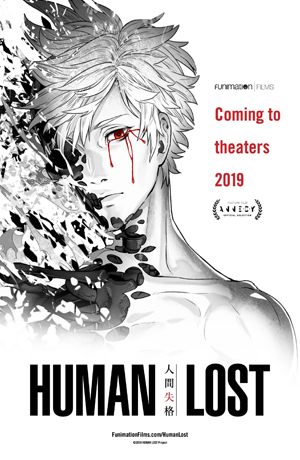 My second film of July 26 was in the big Hall theatre, a science-fiction anime called Human Lost (人間失格). Directed by Fuminori Kizaki, it was scripted by Tou Ubukata based on a novel by Osamu Dazai. The movie’s set in 2036, when advanced nanotechnology has given human beings a lifespan of 120 years but turned Japan into a deeply unequal society, with the wealthy sequestered inside a vast citadel called “the Inside.” Some people, for unclear reasons, metamorphose into monsters: the ‘Human Lost’ phenomenon. A troubled young artist, Yozo Oba (Mamoru Miyano), gets involved with his cyborg friend Takeichi (Jun Fukuyama) when he attempts to break into the Inside, and sets off a complex series of events which bring to light the truth about the Human Lost problem and the future of 2036 — but which also might drive Yozo over the edge of sanity.
My second film of July 26 was in the big Hall theatre, a science-fiction anime called Human Lost (人間失格). Directed by Fuminori Kizaki, it was scripted by Tou Ubukata based on a novel by Osamu Dazai. The movie’s set in 2036, when advanced nanotechnology has given human beings a lifespan of 120 years but turned Japan into a deeply unequal society, with the wealthy sequestered inside a vast citadel called “the Inside.” Some people, for unclear reasons, metamorphose into monsters: the ‘Human Lost’ phenomenon. A troubled young artist, Yozo Oba (Mamoru Miyano), gets involved with his cyborg friend Takeichi (Jun Fukuyama) when he attempts to break into the Inside, and sets off a complex series of events which bring to light the truth about the Human Lost problem and the future of 2036 — but which also might drive Yozo over the edge of sanity.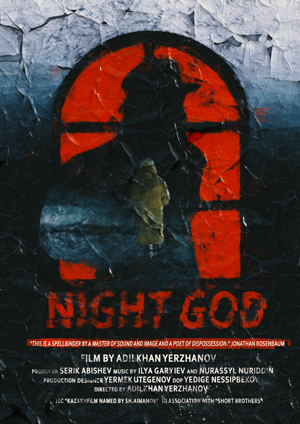 My first film on Friday, July 26, was a Kazakh work playing at the de Sève Cinema. Written and directed by Adilkhan Yerzhanov, Night God is a particular sort of uncompromising. It’s a beautiful picture, but extremely slow, still, and self-consciously meditative. I was deeply moved, for all its studied avoidance of simple dramatic action.
My first film on Friday, July 26, was a Kazakh work playing at the de Sève Cinema. Written and directed by Adilkhan Yerzhanov, Night God is a particular sort of uncompromising. It’s a beautiful picture, but extremely slow, still, and self-consciously meditative. I was deeply moved, for all its studied avoidance of simple dramatic action.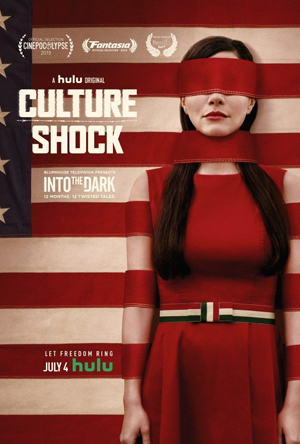 On June 25 I went to the De Sève Theatre for the one movie I’d see that day at the Concordia campus. It was called Culture Shock, and while it’s available on Hulu, this was a rare chance to see it in Canada.
On June 25 I went to the De Sève Theatre for the one movie I’d see that day at the Concordia campus. It was called Culture Shock, and while it’s available on Hulu, this was a rare chance to see it in Canada. 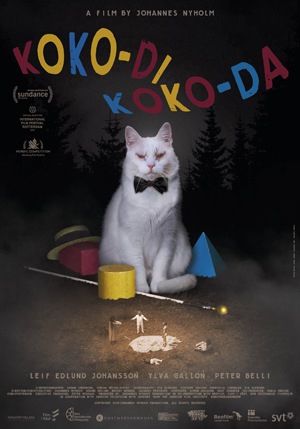 There was only one film I planned to watch on July 24, and that was writer-director Johannes Nyholm’s Koko-di Koko-da. It promised to be a strange movie about characters trying to break out of a time loop, and I settled in at the De Sève Theatre wondering at the horror elements implied by the film’s description in the festival catalogue.
There was only one film I planned to watch on July 24, and that was writer-director Johannes Nyholm’s Koko-di Koko-da. It promised to be a strange movie about characters trying to break out of a time loop, and I settled in at the De Sève Theatre wondering at the horror elements implied by the film’s description in the festival catalogue.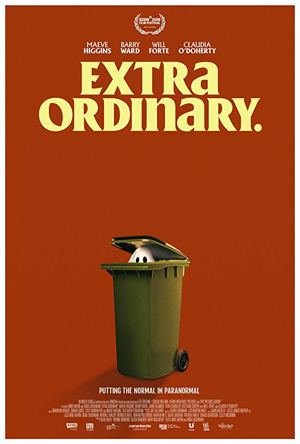 I had one film on my schedule for July 23, an Irish horror-themed comedy named Extra Ordinary. It was preceded by one of the best shorts I saw at Fantasia this year outside of a short film showcase.
I had one film on my schedule for July 23, an Irish horror-themed comedy named Extra Ordinary. It was preceded by one of the best shorts I saw at Fantasia this year outside of a short film showcase.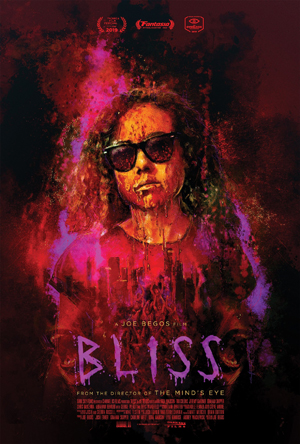 I had been planning to head home after the first movie I saw on July 22,
I had been planning to head home after the first movie I saw on July 22,  On Monday, July 22, I was back at the Hall Theatre for one of the movies I was most anticipating. It was a new live-action manga adaptation from Hideki Takeuchi, director of the
On Monday, July 22, I was back at the Hall Theatre for one of the movies I was most anticipating. It was a new live-action manga adaptation from Hideki Takeuchi, director of the 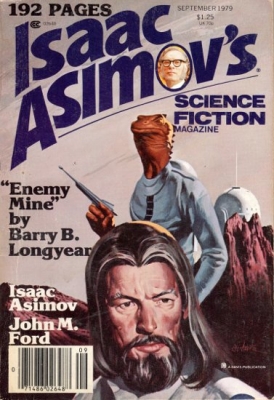
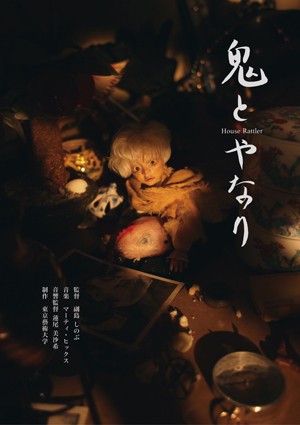 My last screening of July 21 brought me back to the De Sève Theatre for a showcase of animated short genre films from China, Taiwan, Korea, and Japan, a grouping titled “Things That Go Bump In the East.” 11 films in a range of visual styles promised variety. I’d been having good luck with short films at the festival so far, and settled in eager to see what would come now.
My last screening of July 21 brought me back to the De Sève Theatre for a showcase of animated short genre films from China, Taiwan, Korea, and Japan, a grouping titled “Things That Go Bump In the East.” 11 films in a range of visual styles promised variety. I’d been having good luck with short films at the festival so far, and settled in eager to see what would come now.